
It's been an interesting last few months for Nintendo fans. We were handed a massive gigabyte of leaked material from deep within their headquarters that revealed things like the entire development process behind Yoshi's Island, as well as the evolution of Yoshi himself (who started out with the more accurate body shape of a dinosaur). We got to play the 1997 Japanese trade show demo of Pokemon Gold and see concept art for Pokemon that were changed or never even made it. We got to explore beta regions from Zelda 64 that were shown in early trailers but didn't appear in the final game. We found beta versions of every single Genesis Sonic game (okay, that's not Nintendo, but it counts in my book). We got our hands on the rumored XBox 360 conversion of Goldeneye 007. And just yesterday, I woke up, turned on my computer and there, standing before me, was DINOSAUR PLANET.
So much has come out that there have been revelations that were drowned out by the noise of the bigger revelations. One of the things the Gigaleak produced was the source code for The Legend of Zelda: Link's Awakening. I thought that was huge, but apparently everyone else thought other things were huger. The Yoshi's Island material was analyzed and dissected from every angle, but I've heard barely anything about Link's Awakening. And it's a shame, because I found some cool stuff by myself.
The folder with the Link's Awakening material originates from the time period when they were colorizing the game for the release of Game Boy Color in 1998. Both the original ASM (Assembly) scripts are there as well as the additional scripts written to add in the new material. There are also ROM files from various points in the conversion process, from the original black-and-white to the finalized DX retail ROM. For the first time ever, we have access to the in-between stages where all they did was add color to the existing tiles. These were the source of early screenshots in magazines:

The ROMS are also dated, revealing the initial color conversion took place through June and July of 1998. The new content and revamped tiles seem to have been added sometime in August.
Link's Awakening, like all other Nintendo games at that time, was written in Assembly. You might consider it a dead art but since the homebrew community has been growing, a new generation is ASMing up fresh games for retro machines. Since I had coincidentally been studying Assembly myself, I found I could not only look at the original code for one of my favorite games....I could UNDERSTAND it! That was awesome!
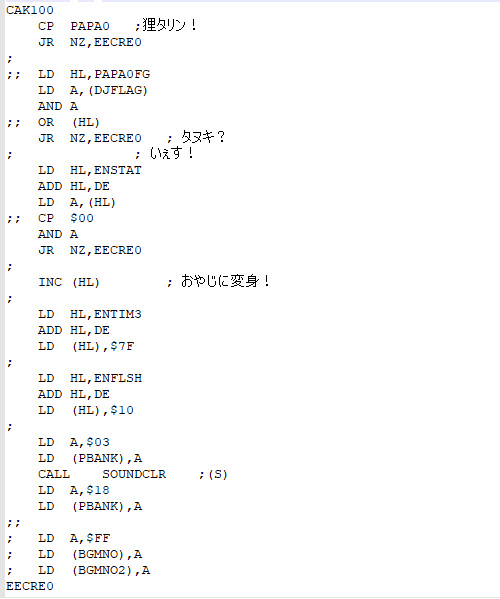
Now, if you have the time, I'll teach YOU how to understand it too. If some of you find this too confusing, you can skip down one-fourth of the page to the part where I start talking about something else. It's really to your loss though...there isn't much to Assembly and reading the code from your favorite game is a fascinating experience.
Assembly is one of the first programming languages ever devised and thus it is one of the most simple. It has only a handful of commands, each one being just three letters long. it doesn't take much time to go over ever single command in Assembly. The true challenge comes in making anything out of it.
Because it is so primitive, you're taking programming down to its core: maniuplating the very ones and zeroes themselves. A lot of Assembly is just simply moving numbers around...taking a number out of memory, adding or subtracting from it, and then storing it somewhere else. With a gazillion of these commands, you have a game. The hard part comes in writing the gazillion commands.
The first thing you need to learn is that you have three places in which to manipulate data:
A
X
and Y
A is what the program mainly uses. And a typical routine starts with loading a piece of data into A.
LDA $4404
"Load A" is the command you'll see the most. It's followed by a registry number -- the exact location of the bit of data the program needs at that point in time. LDA says, "Take the number stored at the location we mentioned and load it into A, so we can do something with it."
The programmer doesn't actually see "$4404." They see a variable or a nickname given to that address. When source code is compiled (when it's crunched by the computer into a game ROM), it becomes raw data and all the names are lost. This is why it's so hard to make sense of a video game's coding without the source code.
Another thing you'll never see without source code are the notes programmers make along the way to help them make sense of what they're writing. The compiler will ignore anything with a semicolon after it, so programmers write notes and guides into the code by preceding it with semicolons:
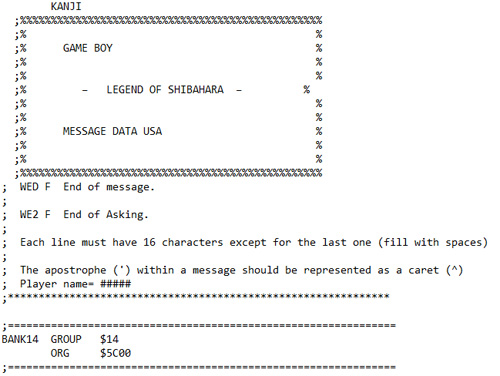
The second thing you need to
learn is how to recognize an IF-THEN-ELSE command. These are the
building blocks of all programs in all languages.
IF something happens, THEN do a thing, ELSE do something
different.
IF the D-pad is pushed left, THEN make the player's character
move left, ELSE don't make it move at all.
You can't do anything without IF-THEN-ELSE, and it works differently in assembly than in most other languages. It's time to learn the next few commands: CMP (compare), BEQ (branch if equal) and BNE (branch if not equal).
LDA dataName
CMP differentData
BEQ newLocation
We've loaded a bit of data into A that we call dataName. Next we're COMPARING it to the data that's stored somewhere else. If the two numbers are the same, the program will BRANCH to a different place in the code (like, say, the part that tells the player character to move left). The BNE command does basically the same thing, only when the numbers are different instead of equal.
That takes care of our IF-THEN. But what about our ELSE?
Well, if dataName and
differentData are two different numbers, then the code simply
won't branch. So below it, we can write what the program should
do when the player isn't being moved.
If we program the D-pad to register a specific number when
pressed, and we make dataName equal to that number, the code will
execute. Otherwise it'll do something different.
Here's the problem with
branching though -- you're only allowed to leap so far. Due to
limitations in assembly memory, the program will refuse to work
if the distance between BEQ and the location we named
"newLocation" is too great.
Fortunately, we have a command with infinite range for those
situations. It's JMP (jump). If you're familiat with 80s BASIC,
this works the same way as GOTO.
You can JMP anywhere as long as
the place you're JMPing to is loaded in the memory bank. So why
bother with BRANCHing at all? Why not just use JMP all the time?
Because JMP is not a command that works with comparing numbers,
BEQ and BNE are.
So to work around this, a typical IF-THEN-ELSE is a combination of BEQ, BNE and JMP. Like this:
LDA dataName
CMP differentData
BNE skipThis
JMP newLocation
skipThis:
This modified IF-THEN-ELSE has unlimited range. iIf dataName and differentData aren't equal, the program heads to the line we've labeled "skipThis" -- skipping the line with the JMP command. If the numbers are equal, then it reads the JMP and obeys, skipping the rest of what we wrote.
When we're done with whatever we need to do to a specific number, we can store it back where we got it by using Store (STA).
STA #$4404
Or as the programmer sees it,
STA leftNumber
And there are more commands than this, but that's enough to read assembly source code somewhat.
Everything I've just described is 6502 Assembly code, which most 8-bit machines (like the NES) used. The Game Boy, however, had a Z80 processing chip, not a 6502, which means the language is a bit different. Here, the instructions are even harder to understand because most of them take up two letters instead of three. But now that you're acquainted with Assembly commands, it doesn't take long to figure out that LD is a shorter LDA, JP means Jump, etc.

So let's take another look at that mess posted earlier. This is from ZEN.DMG,
which appears to be the script that controls Link's interactions with monsters. It makes a bit more sense now.
The notes also help, but some are in Japanese. Good thing we live in the age of Google Translate.
The question and answer part says, "Tanuki?" and then "Yes!" below it. The line by the INC says,
"Transform into a father!" We're looking at the ASM script for the
scene in Mysterious Forest where the raccoon turns back into Tarin.
The first line says, "CP PAPA0." The note by it declares, "TANUKI TARIN!" The game is comparing whatever number is in
A right now to the number registered to mean Tarin as a raccoon. The next command is "JR," which is kind of a cross between JMP and
BEQ...it takes you to a directed place, but it can only travel a limited distance. EECRE0 is the name
of the next part of this script (see the bottom). And NZ is checking PAPA0 to see if it equals zero (meaning nothing is meant to happen).
If PAPA0 is zero, the program
will jump all the way down to EECREO...if not it will stay here.
And if it stays here it will load a flag, do some math to it, then make the same comparison again. If the answer is No it will skip
down to EECRE0, if it's yes, it will add some more things to whatever is stored in variable HL, then start the transformation sequence.
Observe at the bottom that the sound is cleared (the music stops) and two sounds are loaded instead, which is exactly what happens when
Tarin starts bouncing around.
Exhausted? Confused? Good news...that part's over. Even if you can't read Assembly there are still
things in the Link's Awakening dump you can gawk at. There are two text files in the folders...one contains every
single line of dialogue in the US version of the game, formatted so the Z80 can read it. And it contains a lot of cut material!
The added dialogue for the DX
version is in a separate file, and there isn't as much cut
material there, but there is an unused box that would have
directly pointed out the extra book located in the library:
There is a book
resting on top
of a bookshelf.
If you run into
the bookshelf,
you can knock
the book off.
Read the book
just like any
other book in
the library.
Once you get the Pegasus Boots and the ability to ram the book off the bookshelf, it reads "New world of color under the five gravestones" and tells you which order to push them in. There's an earlier version that only vaguely hints at the location:
New world of
color. All the
spirits gather.
Try with all
your might. Open
a new path!
Whoever is
worthy receives
the power of
color. I wonder
what the world
of color is?
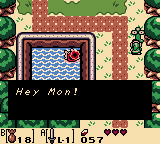
If you use Magic Powder on any Buzz Blob in the game, it will turn into a strange wobbly creature called a Cukeman. It's been a source of debate among the Zelda fandom just what the Cukeman's dialogue means. I've always touted the theory his lines are an inside joke and taken directly from someone who worked at Nintendo. There are others who believe his lines are an early hint about the Nintendo 64, and someone else insisted to me "there WAS NO machine that could display MILLIONS of polygons in 1993."
Well, guess what, everyone....I was right, and it's not just the leak that proves it.
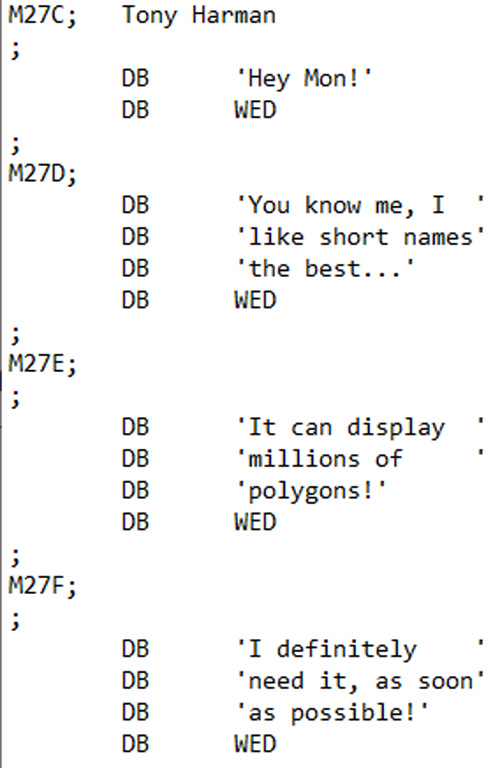
The website Legends of Localization confirmed that in the original Japanese, the Cukeman's lines are taken from character designer Masanao Arimoto, and they're all things he was known for saying like "I figured why not, ya know?" The final thing the Japanese Cukeman says before his dialogue loops is "That concludes this collection of R-Moto-isms. It has absolutely nothing to do with the game!" The other translations didn't break the fourth wall THAT hard but they are all variations on that theme (things someone in their department said a lot).
Also in the German version Cukeman says "NOT WITHOUT A CONDOM".
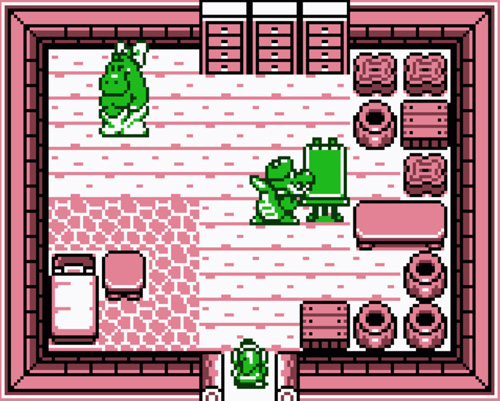
In Animal Village you can meet an artist alligator named Schule, and a hippo model he's currently painting. If you talk to the hippo in the final game, she just says "Go away" or "Quit it." But the hippo originally said a lot more...
Leave me alone!
I'm trying to
sit still so
Schule can paint
my portrait!
Stop trying to
take my towel!
You aren't an
artist! Quit it!
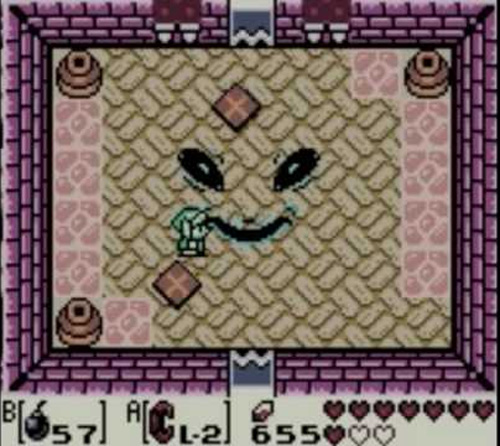
Facade, the dungeon boss of Face Shrine, says this in the final:
Hey dummy! Need
a hint? My weak
point is... !!
Whoops! There I
go, talking too
much again...
But his line was originally more specific (and his weak spot might've been random):
Hey dummy! Need
a hint? My weak
point is XXXX!
Whoops! There I
go, talking too
much again...
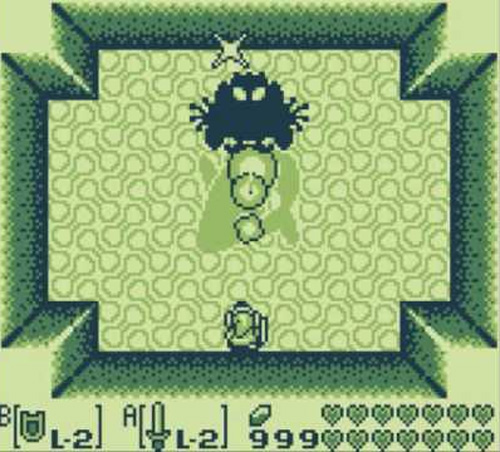
An edit in the final boss speech:

This little change alters their goals quite dramatically. A revised line in the Owl Statues group suggests the Wind Fish himself was intended to be a god:
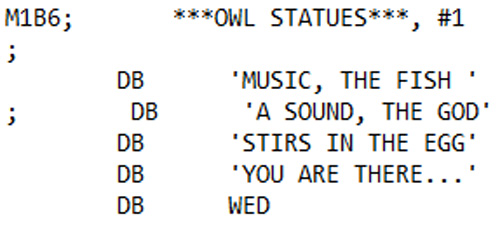
Another Owl Statue had one line changed. If you mean soil, just say soil, don't try to get artsy...
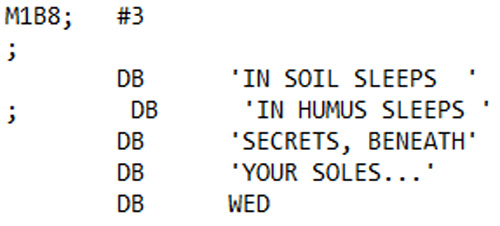
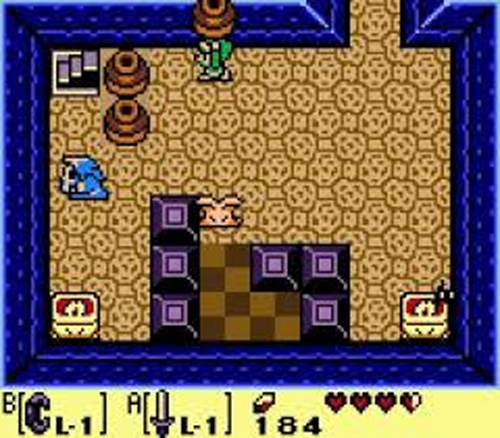
The hint in Bottle Grotto says:
First, defeat
the imprisoned
Pols Voice,
Last, Stalfos...
A dummied-out version appears just below:
First Pols Voice,
Last Stalfos...
I know people who had trouble understanding the finalized version. This was a wise change.
The boy in Mabe Village originally told you an Ocarina was in the Dream Shrine. This was edited out, as he's just a kid.
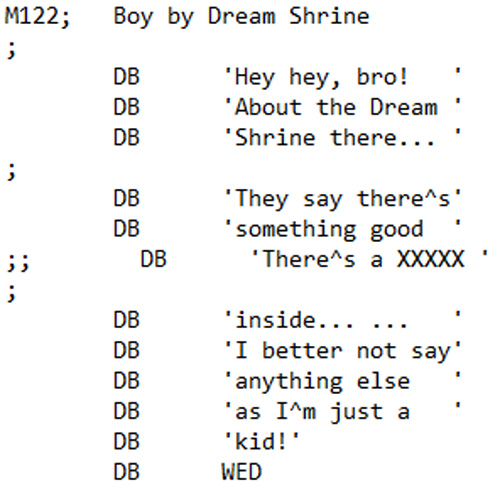

Finally...the mermaid. If you've ever read a listicle of Link's Awakening facts, then you know there's a mermaid in Martha's Bay who asks you to find a different item in the Japanese original than in everywhere else. In the US, Europe and Austraila she loses a necklace. In Japan, she loses her bikini top. Today we can reveal that a full set of English text for the swimsuit version was written.
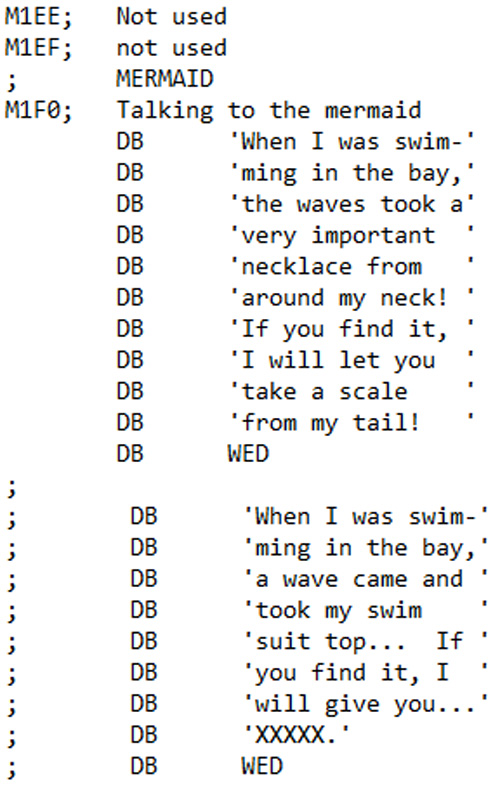
When I was swim-
ming in the bay,
a wave came and
took my swim
suit top... If
you find it, I
will give you...
XXXXX
If you then dive near the mermaid, she tells you "I have already looked around here!" If you try it in the unaltered version she has a bigger reason to object:
Hey! Quit it!
You find both items by talking to the fisherman below the bridge nearby. There is alternate dialogue here as well:
Your ITA is now a
pink swimming
suit top ITB !
L-l-lucky!
When you return the swimsuit:
Ahh! That's it!
My swim suit!
Hey! Give it to
me! Give it!
If you give it
back, I will let
you take a scale
from my tail!
Yes! No Way
The responses are also different, though in some cases they don't need to be:
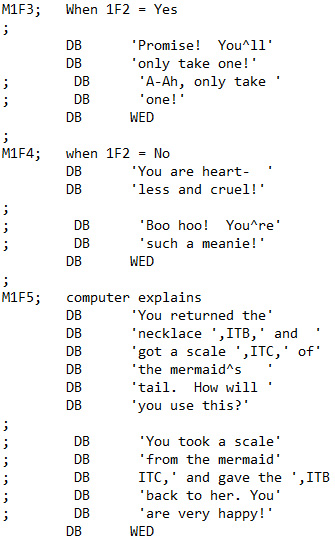
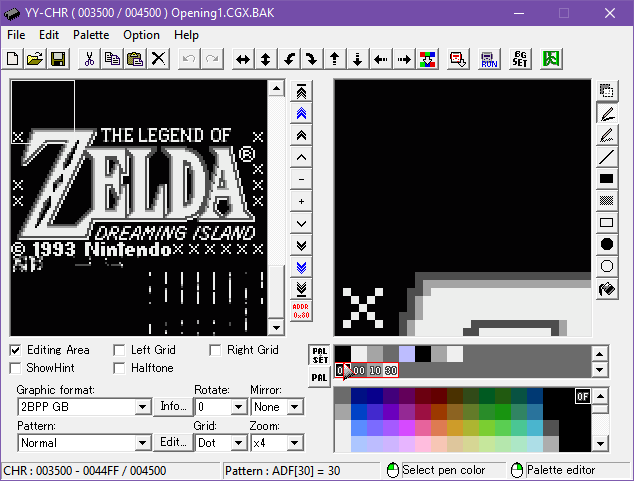
There isn't as much strange beta content in the image files as there has been in other corners of the Gigaleak, but there are THINGS people have found. This isn't really one of them; "Dreaming Island" is what the subtitle is in Japan.
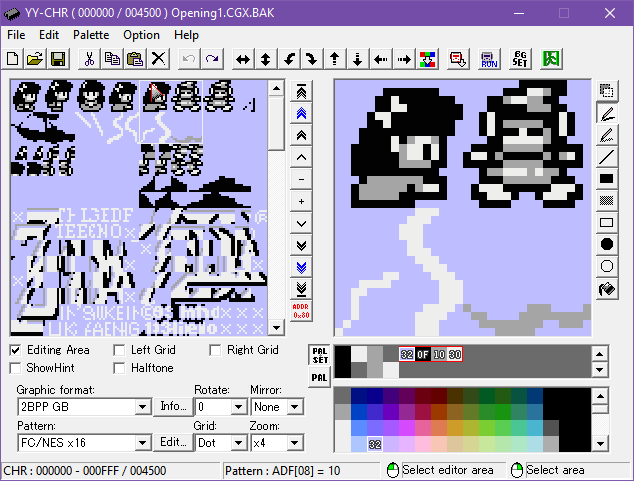
This black-haired beta Marin isn't too exciting either.

This sprite bank also doesn't appear to have anything -- until you glance at the upper row. Is that PRINCESS ZELDA?? The presence of her and the guy in the robe suggests these are leftovers from the beginning of development, when this was supposed to be a simple Game Boy port of Link to the Past.
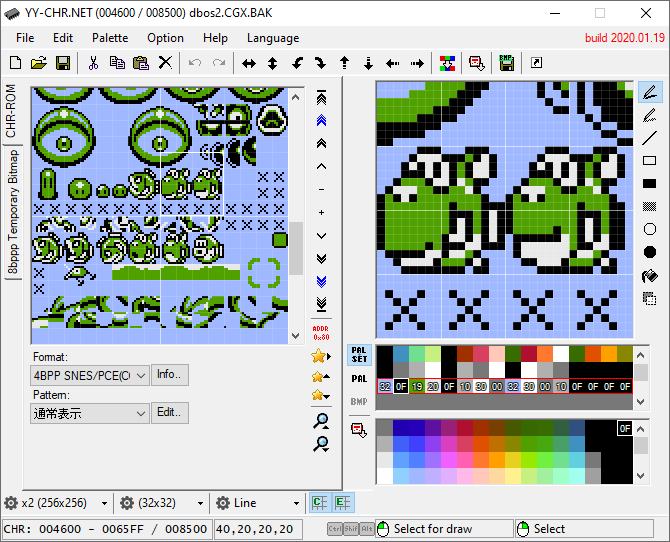
Also uncovered: a fish with Yoshi's face. Your guess is as good as mine where it could've gone.
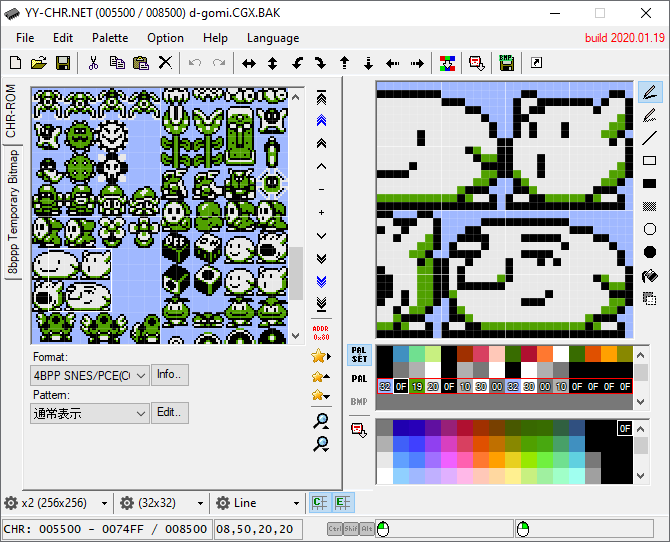
Did Kirby just eat Ted Cruz?? (Good.)
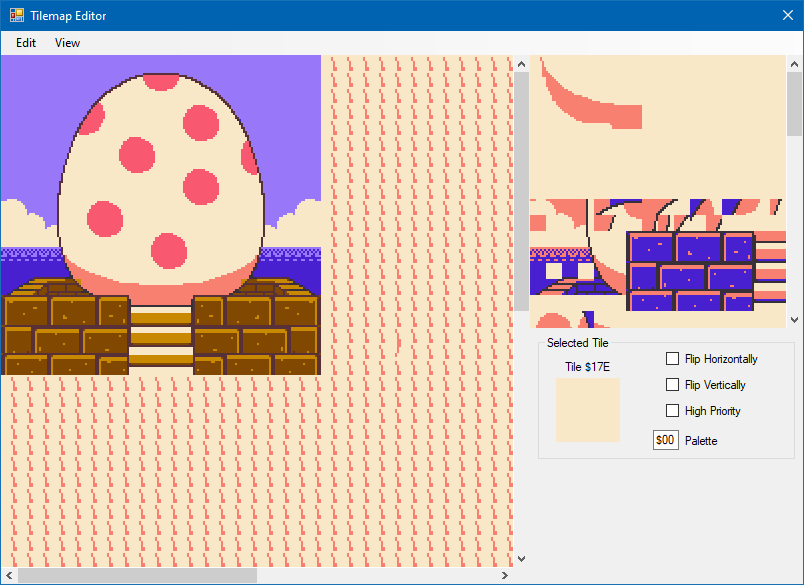
A view of the Wind Fish egg no one's seen before. Based on the artstyle it looks to have been made for a cutscene in the DX version.
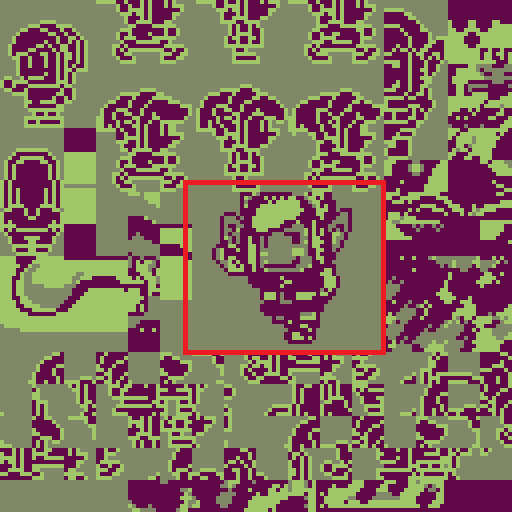
A possible pose for a rejected photo.
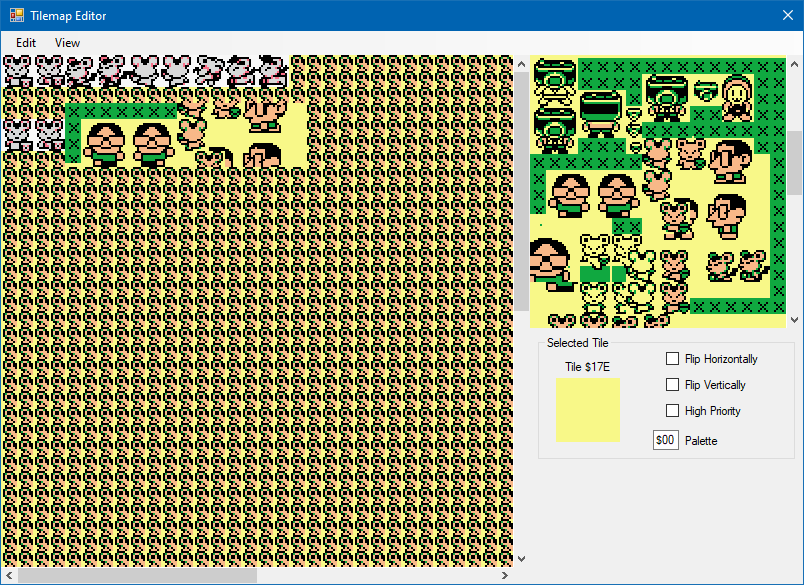
And speaking of photos, at one point they must've been considering giving the Camera Shop owner a LITERAL CAMERA FOR A HEAD. Yeesh!
CLICK THIS ASSEMBLY VERSION OF THE GAME OVER SCREEN TO RETURN TO THE MAIN PAGE